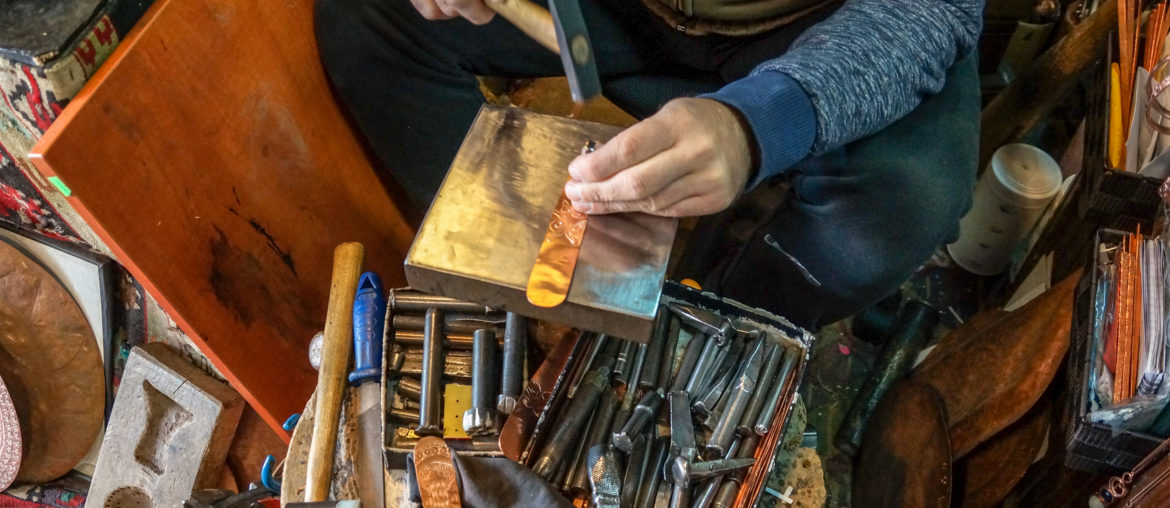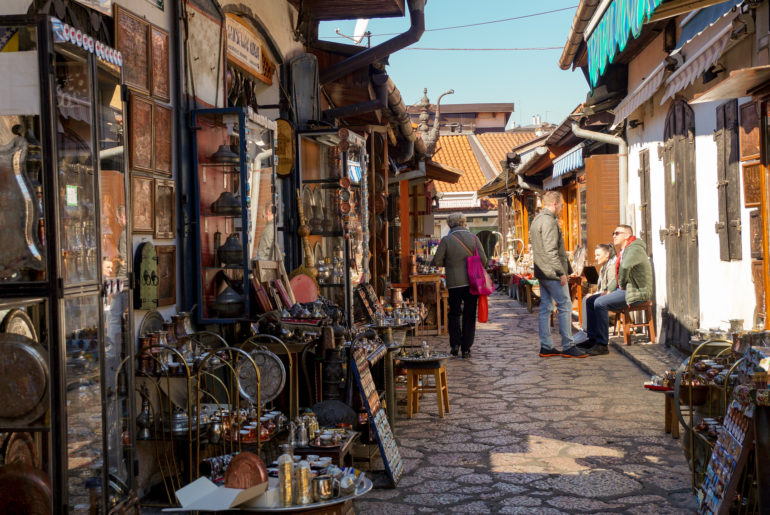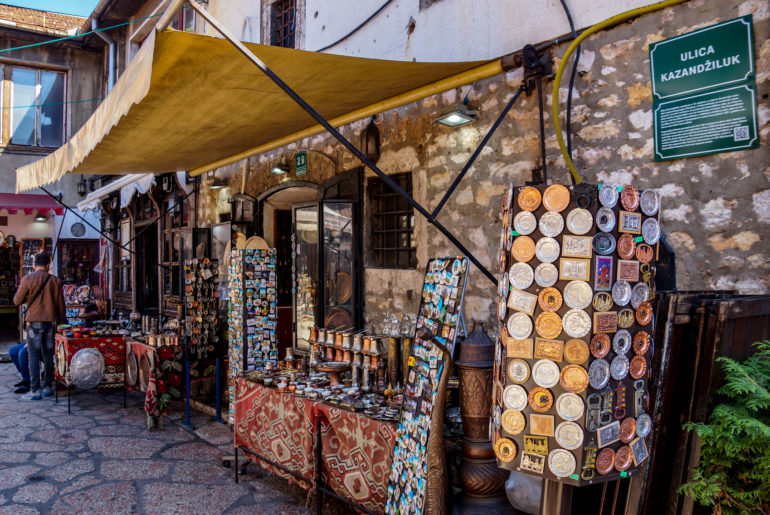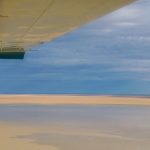Ping, ping, ping.
The copper makes a piercing sound as the hammer and nail punch into the metal.
Ping, ping, ping.
Kenan Hidić, a third-generation coppersmith, is at work in his family’s shop in Baščaršija, Sarajevo’s old town. The store is at the end of an alley, around the corner from Pigeon Square, where tourists feed the birds swarming the steps of Sebilj Fountain.
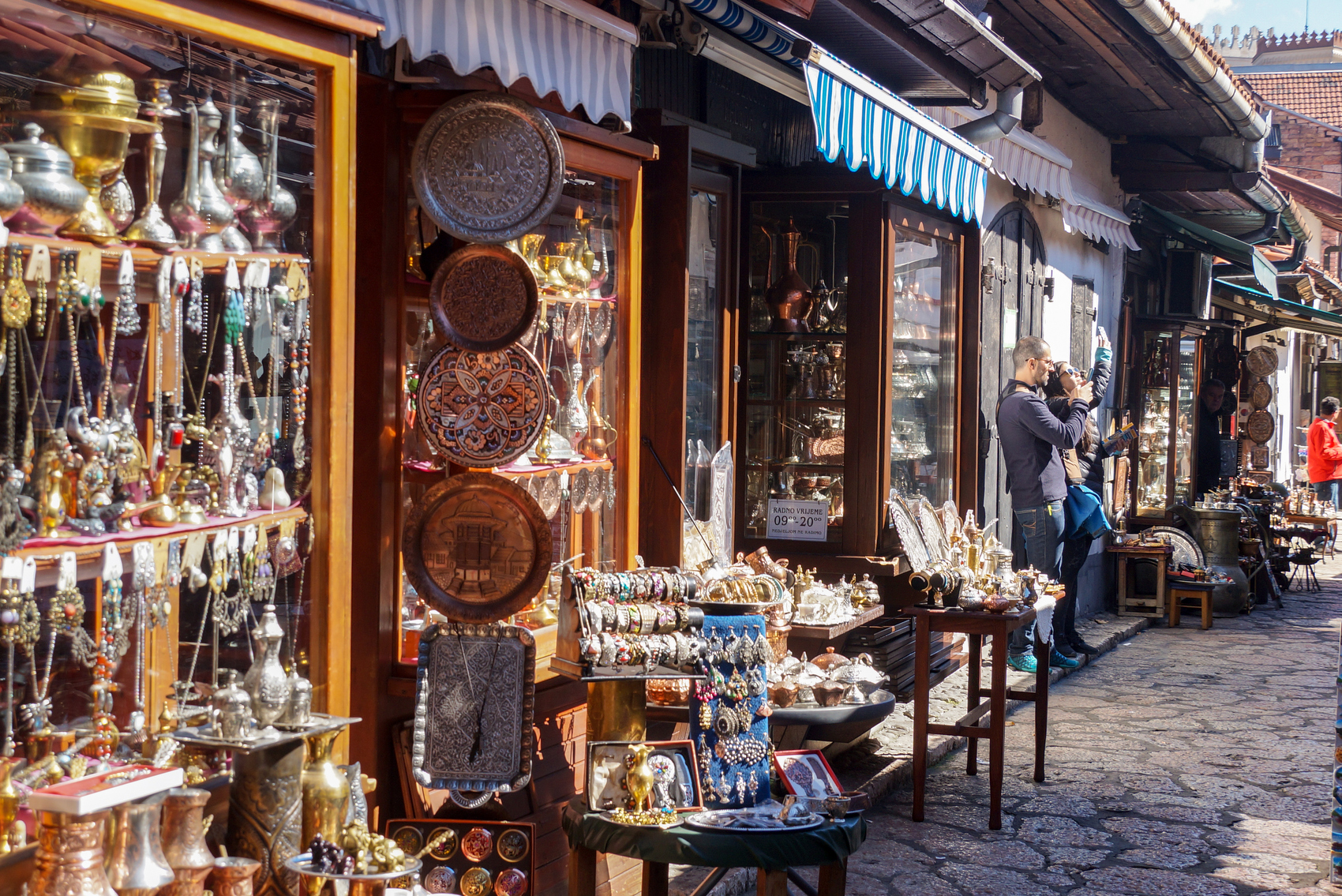
In late September, the tail end of peak season, the visitors are starting to drop off, but there’s still enough to make these narrow streets feel crowded. Sarajevo, and more widely Bosnia and Herzegovina, is experiencing somewhat of a resurgence, having slowly rebuilt after the bloody war in the early 90s.
“Every year is better,” Kenan says of the tourist season. “Every year more people are coming.”
First-time visitors are still sceptical, a little afraid, Kenan observes.
“People still connect Bosnia and war. But when you come and you see what you see, you go back home, tell your friends, your family . . . and maybe next year you are coming with your friends and family.”
Kenan has been working here for 20 years – since he finished school. But the family business in Kazandžiluk was started by his grandfather, maybe 70 years ago, Kenan says.
“Now five people from my family do this,” Kenan says. “We can live off that because 80 per cent (of the items) in the shop is our product.”
Kazandžiluk, often nicknamed Coppersmith Street or Coppersmiths’ Alley, is named for the artisans that have lined the street since the 16th century. Even now, hundreds of years on, each shopfront is brimming with metal creations – tea sets, coffee pots, trays, mugs, and small souvenir magnets and bookmarks.
The craft is a legacy of Ottoman rule. Sarajevo was formed by the Ottomans in 1461, after the empire had conquered the region. Their dominance lasted until the Austro-Hungarian takeover in 1878, but the influence runs deep.
In the cafes near Pigeon Square, next to the Ottoman Sebilj Fountain, tourists sip Turkish coffee or tea, always served with a piece of Turkish delight on the side. Baščaršija, the name of Sarajevo’s old town, is derived from the Turkish language, meaning “main market”. At prayer times the muezzin’s call echoes from the mosques scattered around the city.
And along Kazandžiluk the artisans, known as kazandžije (coppersmiths) after the kazani (kettles) they made for the Turkish army, are still at work.
Ping. Ping. Ping.
Kenan is embossing a thin copper bookmark when we enter. It is the sound that draws us into his store, of all the shops lining Kazandžiluk.
Using sharp, precise taps of his small hammer he chisels a flower reminiscent of the fleur-de-lis that once adorned the flag of the Republic of Bosnia and Herzegovina.
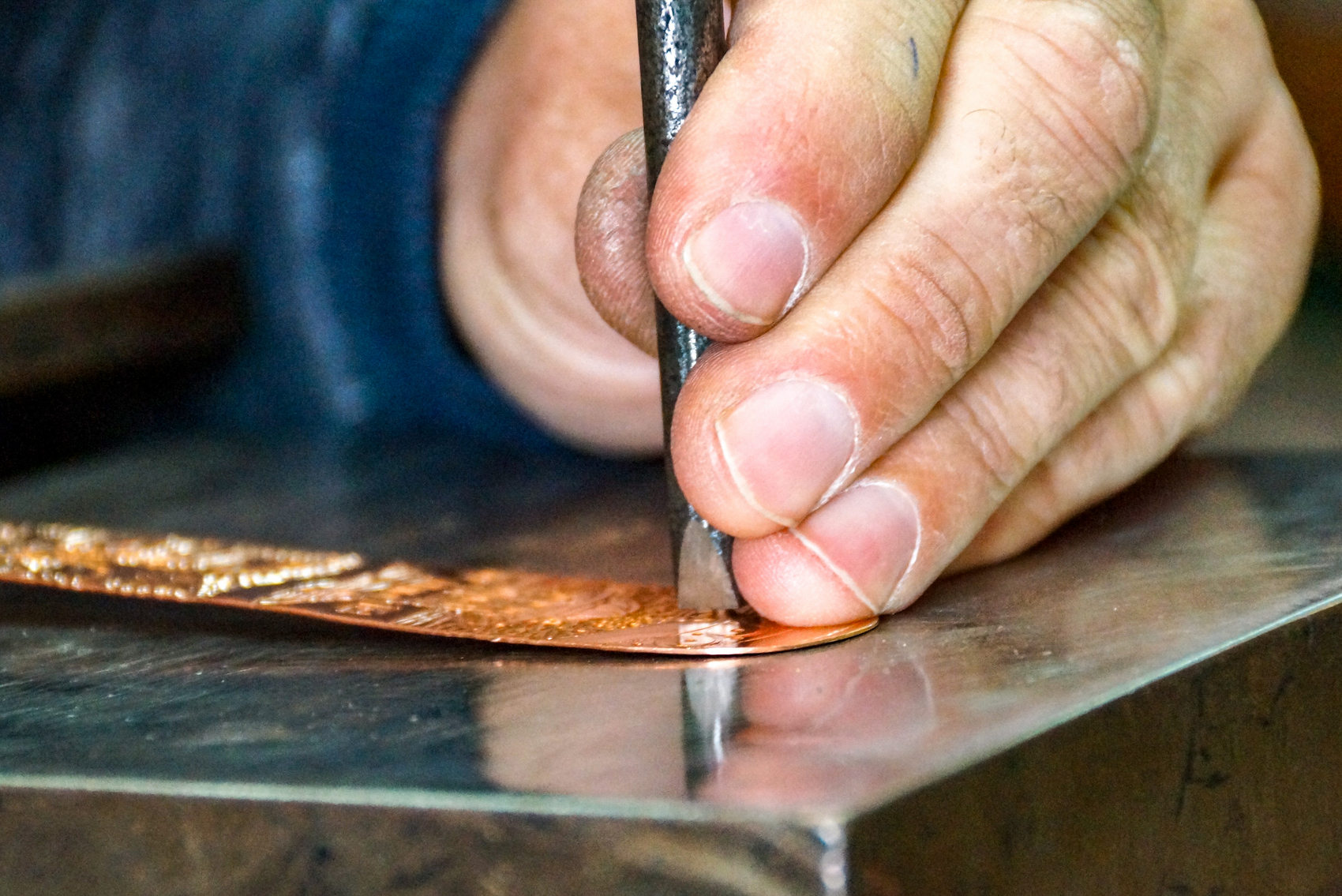
Kenan sits at a low workstation just inside the door of the shop. An assortment of tools are close at hand. A photo of his grandfather sits on the wall to his right.
To his left on one of the shop counters is a tray of bullets and casings that have been crafted into pens. Several kazandžije in Sarajevo are turning remnants of the war- bullets, mortar shells and empty grenades – into souvenirs.
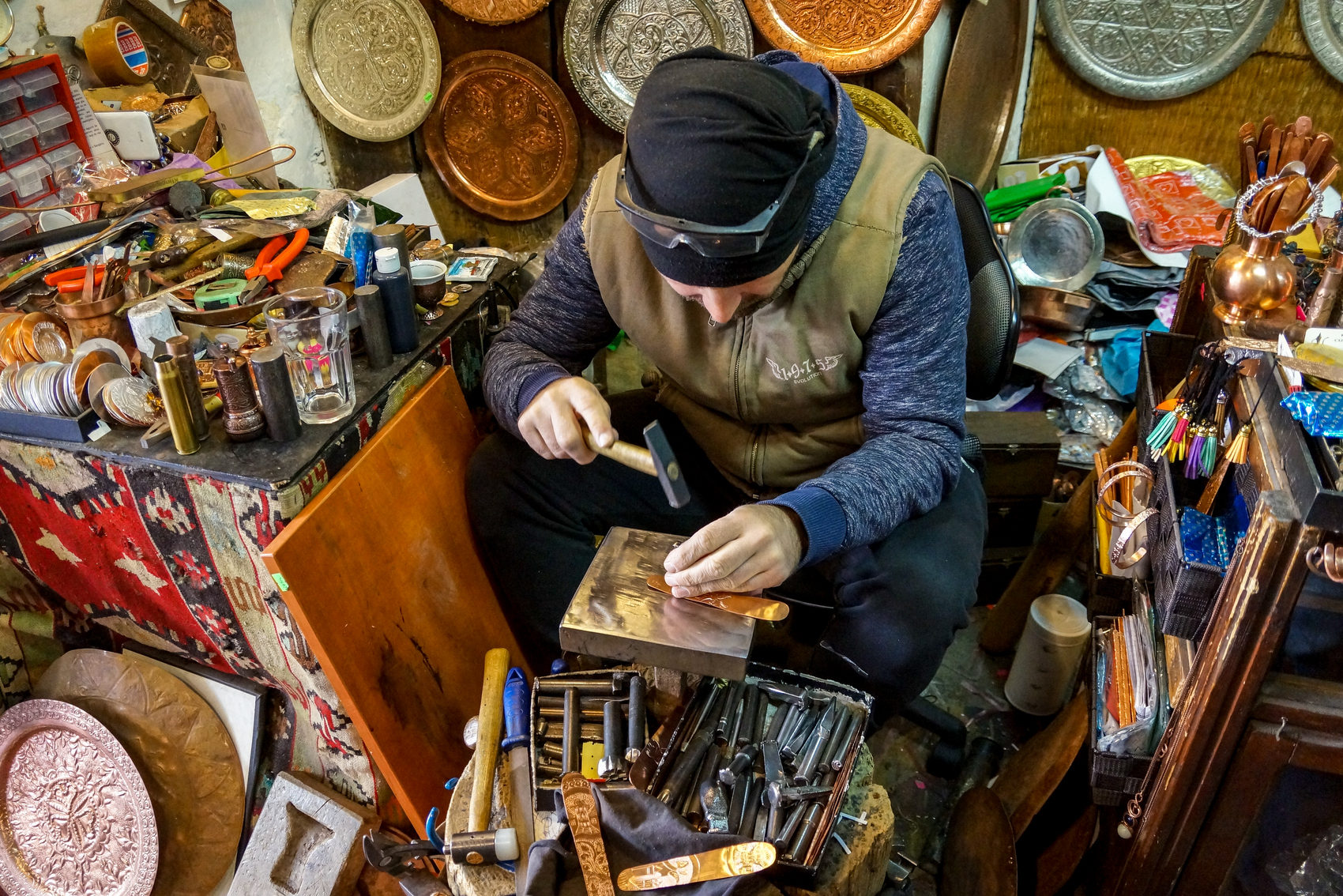
Kenan works and chats while we browse, admiring the intricately decorated pieces that fill every surface in the shop. The pinging stops only when he serves a customer.
We choose a magnet and a bookmark with two blank spaces in which Kenan offers to write the city’s name and the date of our visit.
Ping. Ping. Ping.
Using the skills taught by his father, Kenan expertly punches the text to complete the souvenir while we watch.
Was it hard to learn his craft, I ask.
“It’s not so hard, but you need time for practical work, and with time you are better.”
It’s like every job, Kenan tells me. The longer you work, the better you get.
“But I really love it and that is also very important.”

